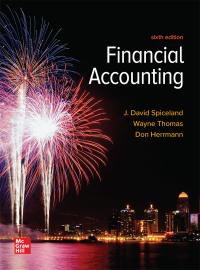15-2 Analysis of Transactions; Preparation of Statements The Mentha Company was incorporated on July 1, 20X1. Mentha had 10 holders of common stock. Laurie Mentha, who was the president and CEO, held 49% of the shares. The company rented space in chain discount stores and specialized in selling running shoes. Mentha's first location was a store in Centerville Mall. The following events occurred during July: A. The company was incorporated. Common stockholders invested S145,000 cash. B. Purchased merchandise inventory for cash, S55,000. C. Purchased merchandise inventory on open account, $28,000. D. Merchandise carried in inventory at a cost of $42,000 was sold for $90,000, $30,000 for cash and $60,000 on open account. Mentha carries and will collect these accounts receivable. E. Collection of a portion of the preceding accounts receivable, $25,000. F. Payments of a portion of accounts payable, $15,000. See transaction C. G. Special display equipment and fixtures were acquired on July 1 for $48,000. Their expected useful life was 48 months with no terminal scrap value. Straight-line depreciation was adopted. This equipment was removable. Mentha paid $15,000 as a down payment and signed a promissory note for $33,000. H. On July 1, Mentha signed a rental agreement with Centerville Mall. The agreement called for rent of $1,550 per month, payable quarterly in advance. Therefore, Mentha paid $4,650 cash on July 1. greement also called for a payment of 15% of all sales. This payment was in addition to the flat $2,350 per month. In this way, Centerville Mall would share in any success of the venture and be compensated for genera such as cleaning and utilities. This payment was to be made in cash on the last day of each month as soon as the sales for the month were tabulated. Therefore, Mentha made the payment on July 31. J. Wages, salaries, and sales commissions were all paid in cash for all earnings by employees. The amount was $30,000. K. Depreciation expense for July was recognized. See transaction L. The expiration of an appropriate amount of prepaid rental services was recognized. See transaction H. 1. Prepare an analysis of Mentha Company's transactions, employing the equation approach demonstrated in Exhibit 15-1 (pg 621). Two additional columns will be needed, one for Equipment and Fixtures and one for Note Payable. Show all amounts in thousands. 2 Prepare a balance sheet as of July 31, 20X1, and an income statement for the month of July. Ignore income taxes. 3. Given these sparse facts, analyze Mentha's performance for July and its financial position as of July 31, 20X1







